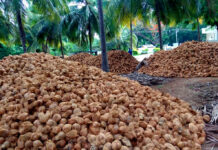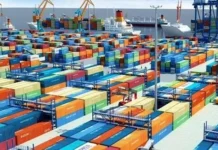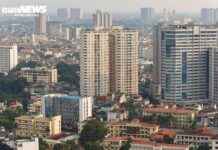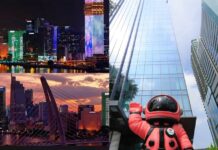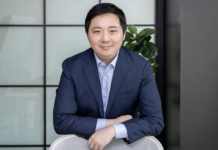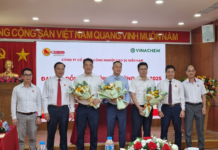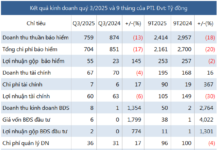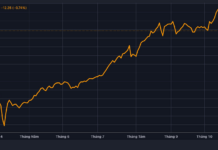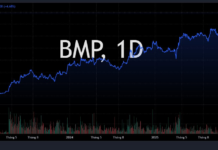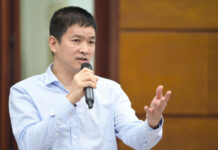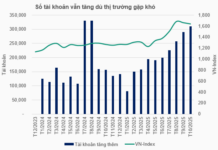Vietnam Economic Magazine/VnEconomy had a conversation with Ms. Nguyen Thi Sam, Director of Japi Foods Company, regarding this program.
It is known that Japi Foods is accompanying the “Blue Ocean – Blue Foods” Program. Can you tell us why Japi Foods became the first enterprise to join this program?
We are accompanying the “Blue Ocean – Blue Foods” Program because it is a very humane program aimed at reducing the impacts of climate change, improving the marine environment, and providing livelihoods for the community.
We joined the program as a connection between Japi Foods and the International Center for Sustainable Aquaculture and Fisheries Exploitation (ICAFIS) when we shared the same purpose.
The reason I mentioned “connection” is that during a trip to my hometown on the occasion of the April 30, 2024 holiday, I suddenly heard on the radio about the “Green Car for a Green Future” program by Xanh SM.
Instantly, an idea popped into my head: Japi Foods is a company that produces and trades products made from raw materials extracted from the sea. So, why don’t we do something to give back to the ocean? What can we do to contribute to protecting the marine environment and keeping it always blue?
With that question in mind, I immediately thought of the program to plant sea mango trees – a salt-tolerant tree species that can resist storms and prevent coastal erosion, and its leaves can also be used to make some consumable items to replace single-use materials…
On my way back to my hometown, my mind kept visualizing the “Blue Ocean” with those fresh and environmentally friendly sea mango trees. Even though it was a holiday, with that thought in mind, I immediately called Mr. Dinh Xuan Lap, Deputy Director of ICAFIS, Vietnam Fisheries Society, an expert with in-depth knowledge in this field, to share my idea.
Hearing this, Mr. Lap exclaimed: “Oh my! Sea mango trees are good, but they take a long time to grow. Why don’t you think about cultivating seaweed instead? This type grows easily, harvests quickly, has economic value, and can absorb carbon from the atmosphere and neutralize ocean acidification.
Currently, this type of seaweed is becoming a solution to clean the planet.” Hearing him say this, I thought it was fantastic, so I made an appointment to meet him after the holiday to learn more in depth.
After the holiday, I immediately met with Mr. Dinh Xuan Lap, and within a week of discussions, I learned that ICAFIS had been nurturing the idea of seaweed cultivation for a long time. Now, ICAFIS can support Japi Foods by connecting us with information related to aquaculture areas that can be combined with seaweed cultivation for Japi Foods to implement the project.
Japi Foods needs to commit to creating favorable conditions for seaweed cultivation and raw material procurement, thereby creating added economic value for the seaweed cultivators.
So, from the simple thought of wanting to give back to the sea what we have taken, we encountered this connection with ICAFIS and embarked on the “Blue Ocean – Blue Foods” Program. We were completely convinced to delve into the project of cultivating and processing seaweed products.
For a long time, people have been talking about the potential and strengths of seaweed. But it seems that its potential has not been fully exploited. So, what is the interesting thing about Japi Foods’ connection with seaweed?
Through consulting data from the Institute of Aquaculture III (Nha Trang), we know that Vietnam has more than 887 species of natural seaweed, of which 88 species have economic value, belonging to three main groups: cartilaginous seaweed, filamentous seaweed, and grape seaweed.

The central coastal region has the highest number of seaweed species distribution with 310 species, followed by the southern coastal region with 221 seaweed species. In the Gulf of Tonkin, 218 species of natural seaweed have been identified. There are many interesting things about seaweed for us, including:
First, it brings benefits to the environment. Research on seaweed has proven its ability to absorb carbon, nitrogen, and phosphorus, thus reducing environmental pollution. It can absorb carbon from the atmosphere and neutralize ocean acidification, helping to clean the planet.
Second, seaweed is easy to cultivate, providing a livelihood with low investment costs, suitable for coastal residents, and most importantly, it generates a good income for them. For example, the cartilaginous seaweed, which the farmers call the “anti-poverty tree,” only requires an investment of about VND 10 million per hectare of water surface. Due to its short growth period, within 3-4 months, depending on the water conditions, the cultivators can harvest and sell the raw cartilaginous seaweed.
Third, seaweed has high nutritional value and is considered the “bird’s nest of the sea.” It is a food rich in minerals and trace elements. Seaweed can be used to produce biofuels, cosmetics, bioplastics, or pharmaceuticals and functional foods thanks to its anti-inflammatory and antioxidant properties. Additionally, seaweed can be used as animal and aquatic feed, fertilizer to stimulate growth and reduce methane in animal waste…
Fourth, seaweed helps reduce the amount of CO2 in the atmosphere. Therefore, in the long run, the cultivation and management of seaweed will be evaluated and certified by international or national organizations. This will create carbon credits that can be sold on the carbon market, generating additional income for seaweed cultivators.
Finally, and most importantly, seaweed processing aligns with Japi Foods’ strategic vision as we are pursuing a circular economic model for our company.
You just mentioned the strategic vision and the circular economic model. Can you elaborate a bit more on these aspects of Japi Foods in the “Blue Ocean – Blue Foods” Program?
Regarding Japi Foods, from the very beginning, we decided to focus on the extraction of essences from aquatic and marine products instead of just primary or conventional processing. The potential of marine resources is immense, and there are countless types that can be exploited, with seaweed being just one of them.
The vision of Japi Foods is to become a leading enterprise in the field of extracting high-value essences from aquatic by-products.
For example, we create products containing nutrients extracted from seaweed to help detoxify the body, supplement minerals, and support overall health, or extract chondroitin from fish cartilage to produce products that support joint health and increase cartilage elasticity…
Therefore, Japi Foods chose to apply the circular economic model in the field of seaweed and seafood processing for development. Through this model, the company participates in the “Blue Ocean – Blue Foods” Program to not only increase the economic value of marine products in general and seaweed in particular but also contribute to reducing resource waste, ensuring sustainable development, and protecting the environment.

Japi Foods applies advanced technology from Japan – a country renowned for its innovative inventions in the field of seafood processing. By combining these technologies with modern production processes, the company continuously improves and enhances product quality.
Moreover, Japi Foods also receives support and advice from leading Vietnamese and Japanese scientists in the field of seafood processing, enabling the company to develop high-value product lines in the industry of extracting essences from marine products.
The full content of the article is published in the Vietnam Economic Magazine, Issue 43-2024, released on October 21, 2024. Please visit the following link to read the article: https://postenp.phaha.vn/chi-tiet-toa-soan/tap-chi-kinh-te-viet-nam




